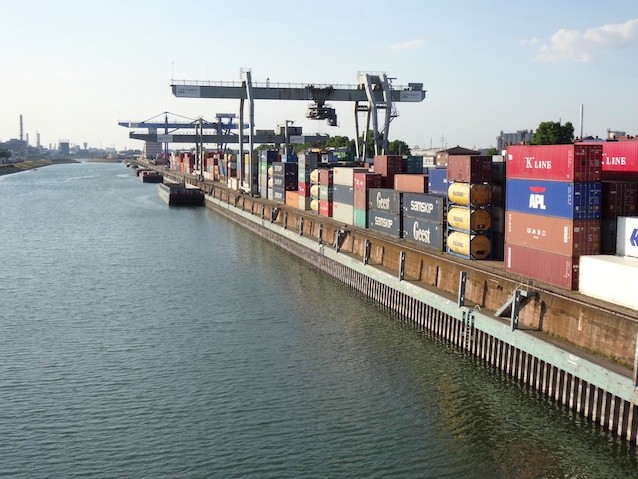India is taking a big step towards reducing its carbon footprint in the transportation sector through its proposed Green Ports Policy. This policy is geared towards making India’s ports more sustainable while promoting the adoption of cleaner energy sources for trucks. The policy also has ambitious targets for increasing green cover and electrification levels at ports.
What are Green Ports?
Green Ports are ports that operate in an environmentally sustainable manner, with a focus on reducing their carbon footprint and preserving the surrounding ecosystem. India’s Ministry of Ports, Shipping, and Waterways has proposed a Green Ports Policy aimed at reducing the intensity of emissions at major ports, promoting the use of renewable energy, optimising water usage, improving solid waste management, and lowering carbon emissions. The policy also includes targets for increasing green cover, electrification of vehicles and port equipment, and establishing green ammonia bunkers and refuelling facilities at major ports by 2035. It applies to both major and non-major ports in India.
Incentives for Cleaner Energy Sources for Trucks
The proposed Green Ports Policy will offer incentives to fleet owners for adopting cleaner energy sources for their trucks, such as compressed natural gas (CNG), liquified natural gas (LNG), and electric or green hydrogen-powered trucks. This move will help reduce the intensity of emissions at major ports. The incentives for cleaner energy sources for trucks are a positive move as they encourage fleet owners to transition to cleaner energy sources, which will have a direct impact on reducing carbon emissions. This move is also in line with India’s commitment to reducing its carbon emissions by 33-35% by 2030 as part of the Paris Agreement on Climate Change.
Increasing Green Cover and Electrification of Ports
One of the key targets of the proposed Green Ports Policy is to increase the green cover at ports by carrying out effective plantations and developing landscapes. The aim is to increase the green belt by over 20% by 2030 and by 33% by 2047. This move is aimed at capturing fugitive emissions and attenuating the noise generated in the port surroundings.
Another important target is to electrify vehicles and equipment at ports. The electrification levels of port equipment should reach 50% by 2030 and 90% by 2047. Green ammonia bunkers and refuelling facilities will also be established at all major ports by 2035. These targets are ambitious, but if achieved, they will have a significant impact on reducing carbon emissions at ports.
Administrative Control and Green Ports Policy
Major ports in India come under the administrative control of the shipping ministry, while the remaining ports, known as non-major ports, are under the state governments and their maritime boards. The proposed Green Ports Policy will apply to both major and non-major ports in India. This policy will help reduce the carbon footprint of the transportation sector and make India’s ports more sustainable.
Impact on India’s Sustainable Development
The proposed Green Ports Policy has the potential to have a significant impact on India’s sustainable development. The policy is aimed at reducing the carbon footprint of the transportation sector, which is a major contributor to carbon emissions in India. If implemented successfully, the policy will help India reduce its carbon emissions and contribute to global efforts to address climate change.
In addition, the policy has targets for increasing green cover and electrification levels at ports, which will have a positive impact on the local environment and communities. Increasing the green cover and creating more green spaces in and around ports will help in mitigating the effects of air pollution and improve the overall air quality. This will not only benefit the health and well-being of the people living in the vicinity but also improve the overall aesthetics of the area.
Electrifying vehicles and equipment at ports will not only reduce carbon emissions but also lower noise pollution levels in the area. The use of green ammonia bunkers and refuelling facilities at ports will also reduce the use of fossil fuels and promote the use of clean energy sources.
The policy also focuses on optimising water usage and improving solid waste management at ports. This will help in conserving water resources and reducing the impact of waste on the environment.
Challenges in Implementing the Policy
While the proposed Green Ports Policy is ambitious and has the potential to have a significant impact, there are several challenges that need to be addressed in its implementation.
One of the major challenges is the cost of adopting cleaner energy sources and electrifying vehicles and equipment. Fleet owners and port operators may be hesitant to make the switch to cleaner energy sources due to the initial cost of investment. The government may need to offer significant incentives and subsidies to encourage fleet owners and port operators to adopt cleaner energy sources and electrify their vehicles and equipment.
Another challenge is the lack of infrastructure for clean energy sources, such as natural gas and electric charging stations. Establishing adequate infrastructure for these energy sources will require significant investment and may take time.
The effective implementation of the policy will also require strong enforcement and monitoring mechanisms. The government will need to ensure that port operators are meeting the targets set out in the policy and taking the necessary steps to reduce their carbon footprint.


